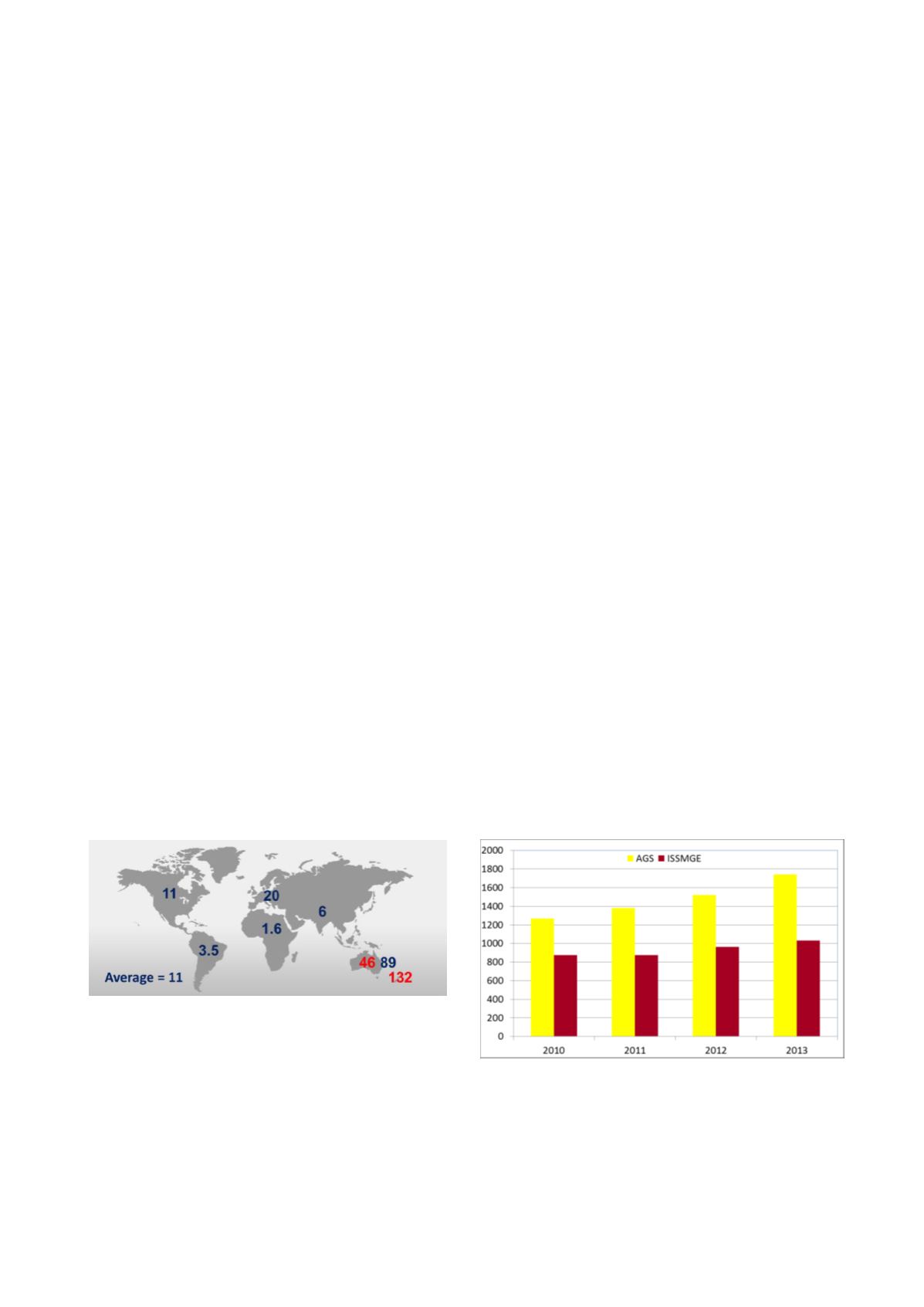

Proceedings of the 18
th
International Conference on Soil Mechanics and Geotechnical Engineering, Paris 2013
REPORT FROM THE VICE-PRESIDENT OF ISSMGE FOR AUSTRALASIA
Rapport du vice-président de SIMSG pour l'Australasie
M.C.R. Davies
ISSMGE Vice-President for Australasia
ABSTRACT: This report contains a summary of the highlights of the activities of the ISSMGE Member Societies in Australasia – the
Australian Geomechanics Society (AGS) and the New Zealand Geotechnical Society (NZGS) - for the period since the last Council
meeting in Toronto in October 2011.
RÉSUMÉ : Ce rapport contient un résumé des points saillants des activités des SIMSG Sociétés Membres en Australasie –
l’Australian Geomechanics Society (AGS) et la New Zealand Geotechnical Society (NZGS) - pour la période depuis la dernière
réunion du Conseil à Toronto en octobre 2011.
KEYWORDS: Regional report, Australasia.
1
MEMBER SOCIETIES
Australasia is the smallest ISSMGE region in terms of the
number of Member Societies. However, in terms of its
membership – which at 1590 in 2013 represents some 8% of the
ISSMGE membership - Australasia ranks 4
th
out of the 6
ISSMGE regions. Australia and New Zealand are not highly
populated counties and the current membership of the region
represents 89 ISSMGE members per million of the population
(46 for Australia and 132 for New Zealand), Figure 1. This
compares to an overall average of 11 ISSMGE members per
million of the population for the Society as a whole. These
statistics reflect not only the high level of interest in the
ISSMGE by engineers in the region but also the level of
geotechnical engineering activity taking place.
Figure 1.
ISSMGE Members per 10
6
of the population.
(After data
presented by Professor Roberto Terzariol, Vice President for South
America, in ISSMGE Bulletin, Volume 5, Issue 2, April 2011)
To some extent the importance of geotechnical engineering
in both Australia and New Zealand is for similar reasons but
there are specific national conditions that prevail. For example,
in both countries there is a requirement to deal with natural
hazards that have large scale detrimental effects on society.
However, whilst slope stability presents geotechnical challenges
to engineers on both sides of the Tasman Sea – which separates
the two countries – New Zealand is located at the boundary of
the Australian and Pacific tectonic plates and has, therefore, a
much higher risk of major earthquake hazards than Australia,
which is not located on any major tectonic plate boundaries.
Australia has an extensive mining industry that requires the
expertise of geotechnical engineers. This industry is
contributing to a relatively strong economy in Australia and the
growth in its population. This, in turn, has resulted in major
opportunities for infrastructure development. There is a demand
in both counties, therefore, for practitioners with a wide range
of expertise across the range of geotechnical engineering;
including engineering geology, rock mechanics and soil
mechanics. It is not surprising, therefore, that both the AGS and
the NZGS are the national societies for the IAEG and the ISRM
as well as the ISSMGE. Although in both cases ISSMGE
members represent the largest group.
Figure 2. Australian Geomechanics Society - membership
Since the beginning of the current ISSSMGE presidency in
2009 the membership of both the AGS and the NZGS as grow
significantly. The AGS is the largest Technical Society within
Engineers Australia and its membership currently stands at
Volume 6 - Page 265









